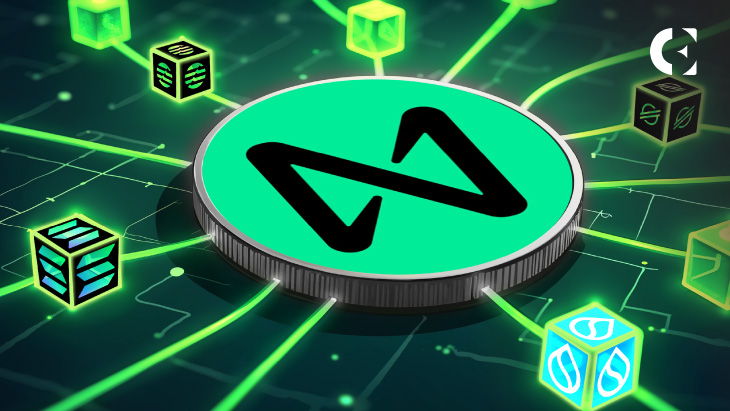- NEAR now supports EdDSA, enabling cross-chain transaction signing via Ed25519-based accounts.
- Users can control Solana, Aptos, TON, and Stellar wallets from one NEAR account.
- Smart contracts on NEAR can now interact natively with EdDSA blockchains using one signing interface.
NEAR Protocol has upgraded its Chain Signatures framework by adding support for EdDSA (Edwards-curve Digital Signature Algorithm), that brings transaction control across multiple blockchains from a single NEAR account.
The update, announced on April 30, enables users and smart contracts to manage assets and interact with networks like Solana, Toncoin, Sui, Aptos, and Stellar without leaving the NEAR ecosystem or managing separate private key systems.
EdDSA Integration Built on Ed25519 Curve
At the core of this release is support for EdDSA signatures based on the Ed25519 cryptographic curve. Known for its speed and resistance to side-channel attacks, EdDSA is used widely across modern blockchain networks and enables efficient signature verification, including support for batch processing.
Through this upgrade, NEAR’s smart contracts and accounts can now generate EdDSA-compliant signatures that are recognized by external chains, all while keeping private keys securely confined within NEAR’s trustless runtime environment.
Interoperability Across Top Chains Made Simpler
The new EdDSA implementation marks a major step toward blockchain interoperability. With this release, NEAR accounts can directly initiate transactions on EdDSA-supported chains like Solana (SOL), Toncoin (TON), Aptos (APT), Sui (SUI), and Stellar (XLM).
Related: NEAR Snap Brings Non-EVM Features to MetaMask for the First Time
Users no longer need to rely on custodial bridges, manage multiple wallets, or juggle distinct cryptographic schemes to access assets across different blockchains. Instead, they can now use their single NEAR account to sign and execute transactions natively on external networks.
Streamlined Developer Experience for Multi-Chain dApps
Beyond user benefits, the update also enhances the developer stack. With EdDSA now integrated, frontend and backend developers can build multi-chain applications without the need for custom cryptographic code per chain.
Developers working on DeFi, gaming, or token management dApps can leverage NEAR’s new cryptographic layer to launch interoperable applications that interact with assets across networks — without needing unique integrations for every chain.
Real-World Use Cases for Cross-Chain DeFi and Swaps
The integration opens new use cases for developers across multiple networks. For instance, Solana-based DeFi platforms can enable cross-chain lending products that interact with NEAR accounts, allowing users to stake SOL while borrowing NEAR. Similarly, developers could build decentralized exchanges on NEAR that aggregate liquidity from chains like SUI, Aptos, and Solana, potentially increasing access to multi-chain swap functionalities.
Omnibridge implementations can also be expanded to include EdDSA-based chains without requiring unique modifications for each supported protocol. Additionally, the new architecture permits smart contracts to create transaction flows across different blockchain environments using a common interface.
Disclaimer: The information presented in this article is for informational and educational purposes only. The article does not constitute financial advice or advice of any kind. Coin Edition is not responsible for any losses incurred as a result of the utilization of content, products, or services mentioned. Readers are advised to exercise caution before taking any action related to the company.









